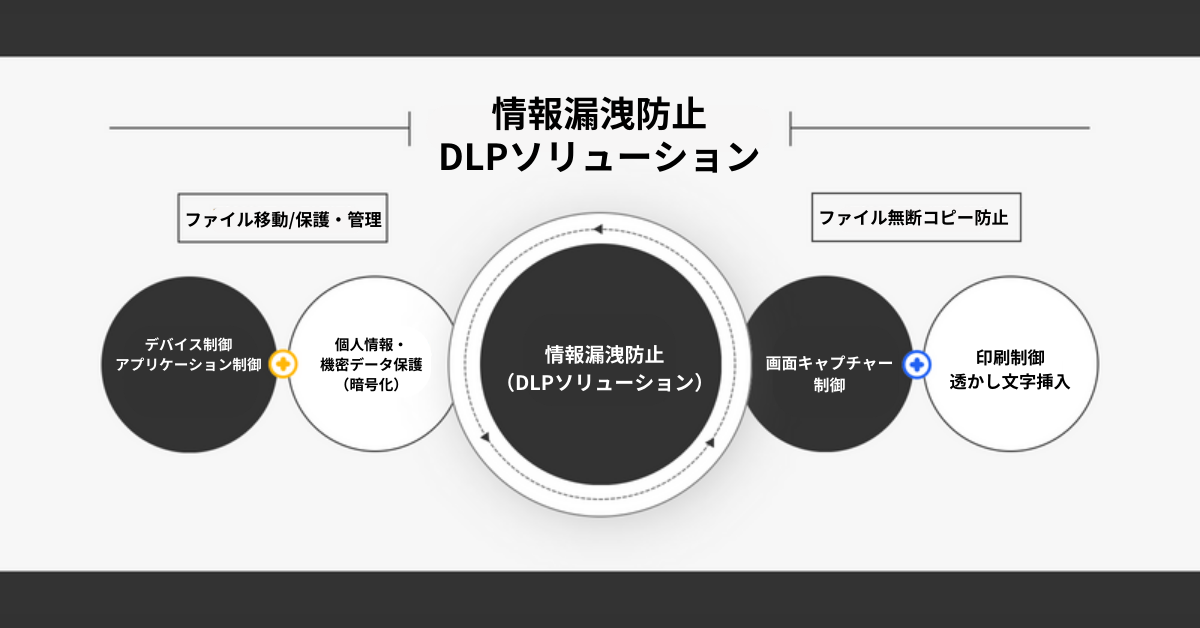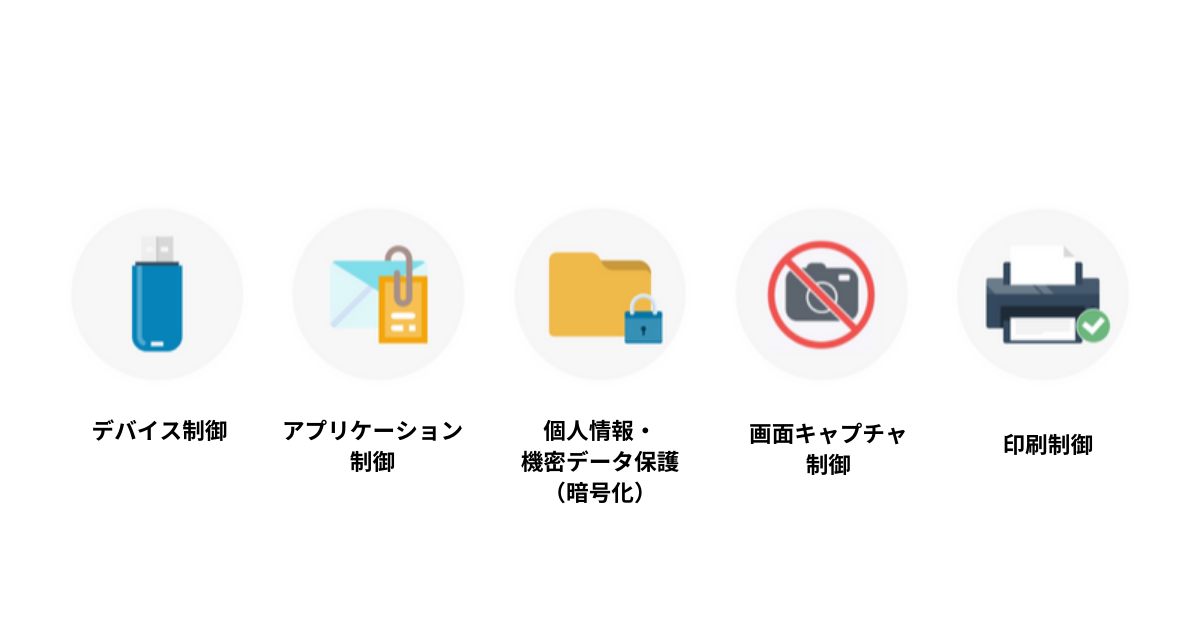What is a DLP (Data Loss Prevention) Solution?

Hello everyone,
This is the EXO Security Support Center.
From all tech and IT companies that possess internal technical information to all commerce companies that hold customer information, there is a problem that must be known and heeded: the issue of information leakage. Recently, personal information and data-related laws have been strengthened, making it even more important to prevent information leaks.
Let’s take a look at DLP solutions that prevent such important internal information leaks.
■ What is DLP?
DLP, which is called by various names such as information leakage prevention, data leakage prevention, data loss prevention, and information loss prevention, stands for Data Loss Prevention and is one of the information security functions with the intent of “preventing the loss of internal information due to leakage.” Its intent is similar to that of DRM (Digital Rights Management), a document security function, but the operating method is significantly different.
DLP = A function that monitors the flow (transfer path) of data to monitor/block internal information leakage within a company.
DRM = A function that grants access rights to data through methods such as encryption and controls access so that only specific users can access it.
■ What is a DLP Solution? Why is it necessary?
There are three main purposes for using a DLP solution:
- Personal Information and Confidential Data Protection
- Many companies hold data containing employee personal information or customer confidential information within the company.
- If such information is leaked, not only will strong fines be incurred under related laws, but also secondary and tertiary damages such as a decline in customer trust and brand reputation will occur.
- Intellectual Property Protection
- Tech companies, IT companies, or internal R&D departments have intellectual property and trade secrets that must be protected from competitors.
- It is necessary to protect your company from information leakage due to simple employee mistakes or malicious information leakage through retirees.
- Ensuring Data Visibility
- Data protection also includes identifying the amount of data held and its transfer paths.
- Using a DLP solution has the benefit of allowing you to check the current status of internal data at once.
■ What Features Does a DLP Solution Have?
Basically, all functions that prevent internal information leakage belong to DLP security functions. First, let’s check the representative DLP security functions.

- Device Control
- Blocks file transfers to removable media or grants administrator approval procedures.
- Application Control
- When business files are taken out through software installed within the company, it detects threats and establishes security policies.
- Personal Information/Confidential Data Protection (Encryption)
- Identifies personal information/confidential data stored on internal PCs, encrypts it, and stores it safely.
- Screen Capture Control
- Blocks capture functions of capture programs, messengers, browsers, etc., and prevents information leakage from the PC screen.
- Print Control
- Can block the duplication of internal documents through output and can also indicate copyright by inserting watermarks.
It is important to use/apply such various DLPs according to your company’s business and the flow of important information.
■ How to Compare DLP Solutions!
In the end, DLP solutions are also tools used by companies to make business operations run more smoothly.
Therefore, it is important to consider your company’s business environment and introduce it, rather than simply judging by security functions.
First, define the security policies that your company needs
Each company has different businesses, and the amount of data held and its flow are different.
Therefore, a DLP solution with many functions and a high price does not necessarily suit your company. You need to consider what security functions your company needs and how flexibly and appropriately the policies of those security functions can be applied to your organization.
Be sure to conduct a PoC (New Product Test Period)
Every company has a different business environment. Therefore, solutions that worked without problems in other companies often cause problems in your company. Therefore, we recommend that you install it directly in your company and proceed with a PoC to ensure that it works without problems. Most solution companies offer a free trial period for PoC, so it is better to use it in advance for at least one month. Also, in an environment where multiple security solutions are used at once, PoC is essential because security solutions may conflict.
Check technical support and product update history
When introducing security solutions, including DLP solutions, it is important what kind of system the product development company has in place to provide technical support and how quickly it can respond. If a problem occurs with a security solution, it may disrupt the overall business progress of the company, so the speed and convenience of technical support can be an important indicator for introducing solutions. Also, you need to make sure that the solution is continuously updated to control newly emerging information leakage channels.
Don’t forget that DLP is not a security strategy but a growth strategy!
Safely manage your company’s information, which has been accumulated through the time and effort of representatives and employees, so that it is not lost by a few malicious people or by simple mistakes.
For inquiries, please contact us here:
■ Email Inquiries: globalsupport@jiran.com